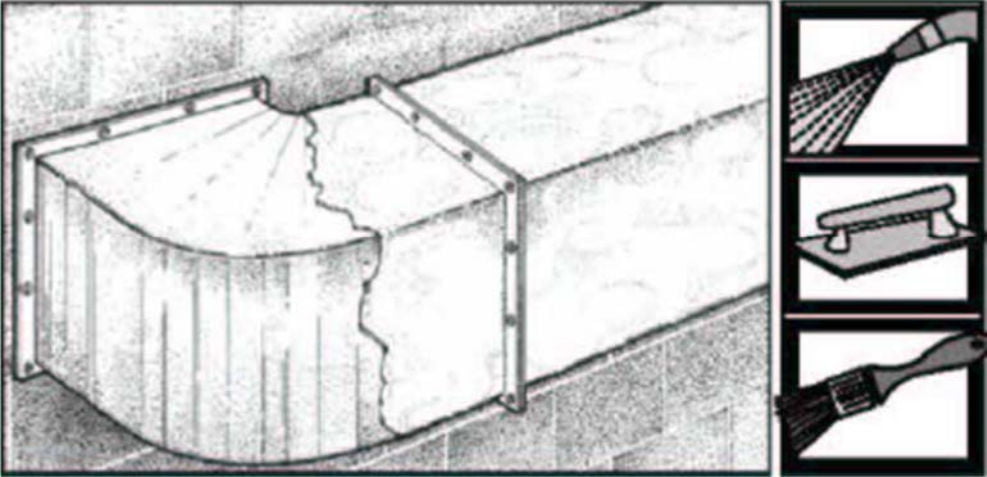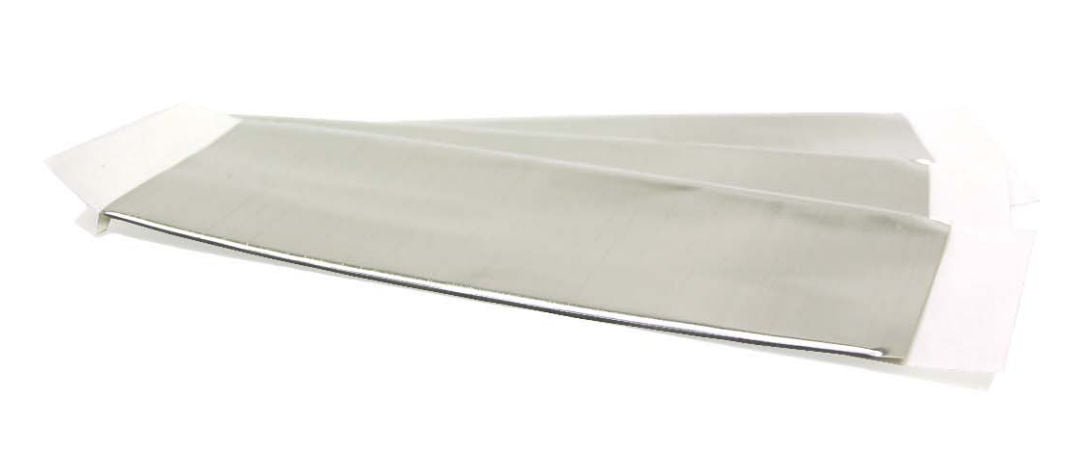Acoustic sound absorbing materials are used to reduce the acoustic vibration within a structure or system. In order to gain an understanding of how acoustical damping works, following are a number of helpful principles.
There are two typical types of applied acoustical damping materials. At Vibra-Sonics, we are proud to carry both materials in the form of excellent quality products.
Extensional Damping
The complete surface of a relatively lightweight material is fully covered with the ‘damping’ medium. This medium is typically applied as a liquid or semi-liquid. When dry, it is flexible to the point of having a natural frequency below the frequency range of human ‘hearing’.
Typically it has a dry weight equal to 1 ½ times the mass of the treated material. Alternatively, a fully cured sheet, with a Pressure Sensitive Adhesive (PSA) backing, can be applied over the entire radiating surface.
The extensional vibration damping product that we sell is Antivibe (Aquaplas) – Blachford. This damping compound is an off‐white, paste‐like liquid that is easy to apply by spray, trowel or brush. Antivibe is highly resistant to water, oils, solvents, acids and alkali. The material is non‐toxic, non‐flammable (wet or dry), almost odourless and is non‐aging.
Antivibe is highly effective in reducing vibrational resonance and unwanted noise which is often described as humming or tininess. Applying this product to affected surfaces will dissipate structure‐borne vibrational energy. It will also dissipate the directly related and radiated air‐borne noise energy. This damping liquid or putty is a water based compound that dries to be flexible and solid.
The visco‐elastic properties, of this product, convert vibrating surfaces into poor transmitters of acoustical energy. This damping material is unable to transfer the energy of the vibrating source fast enough to effectively transmit much noise or vibration. Applying this product to affected surfaces will dissipate structure‐borne vibrational energy and the directly related and radiated air‐borne noise energy.

Antivibe, extensional vibration damping compound can be used in a wide range of applications:
Constrained Layer Damping
As with the effect of placing one’s finger on a resonating cymbal, only a relatively small area needs to be addressed to reduce predominant frequency radiation or completely eliminate element resonant energy radiation from the lightweight material surface.
Constrained layer damping materials simply consist of a thin gauge metal or inert semi-rigid material having a different natural frequency than that of the radiating surface. This material is attached to a ‘mastic’ (a thin layer of soft semi-solid material similar to ‘Plasticine®’).
In effect, the vibrating surface and the thin gauge material vibrate at different natural frequencies. The driving energy of the vibrating surface is dissipated in the intimately attached mastic interlayer. Here, it attempts to ‘telegraph’ its predominant frequencies to a material, also intimately attached to the mastic, that has inherently different natural frequencies.
Roughly, the amount of extensional damping material required need only cover 15% of the radiating surface area. To install constrained layer damping, the material should be cut into variously sized pieces. Then, the pieces should be randomly spaced in and around the center, rather than the perimeter, areas of the radiating surface.
The product is very easy to apply being peel and stick with a built-in pressure sensitive adhesive. This adhesive will stick to most constructed surfaces. It can be painted over immediately without bleeding or other adverse effects.
At Vibra-Sonic, the constrained layer damping product we carry is VSC Constrained Layer Damping Pads. VSC Damping Pads are a specially plasticized, high tensile, high elongation, constrained viscoelastic damping pad. They consist of an energy-absorbing mastic integrated with a constraining layer of .010″ flexible aluminium. The combination of mastic material with the aluminium top layer provides the maximum capacity to block sound.
Extension and compression of the mastic sound damping material converts vibratory energy into heat. This works to reduce noise levels of the damped substrate. The aluminium top layer maximizes this effect by re-directing any of the escaping vibratory energy back into the mastic layer. Generally only 10 – 20% of a noise generating surface needs to be treated.

VSC Damping pads can be used on most constructed surfaces such as:
Selecting the best type of acoustic damping material for your project.
The goal of all our sound proofing materials and products is to control unwanted noise and vibration. To do this, it is important to ensure you select the product that best fits your particular environment.
Large surface area vibrating and resonating surfaces are better treated with extensional damping materials rather than with constrained layer materials. This is because extensional damping materials are more effective on the lower frequencies typically generated by larger surface areas. When installing constrained layer damping pads, typically, only 10 – 20% of the noise generating surface needs to be treated.
If you would like some help with your project to find the right product and solution, give us a call, email or fill out the contact us form. We’d be happy to help!